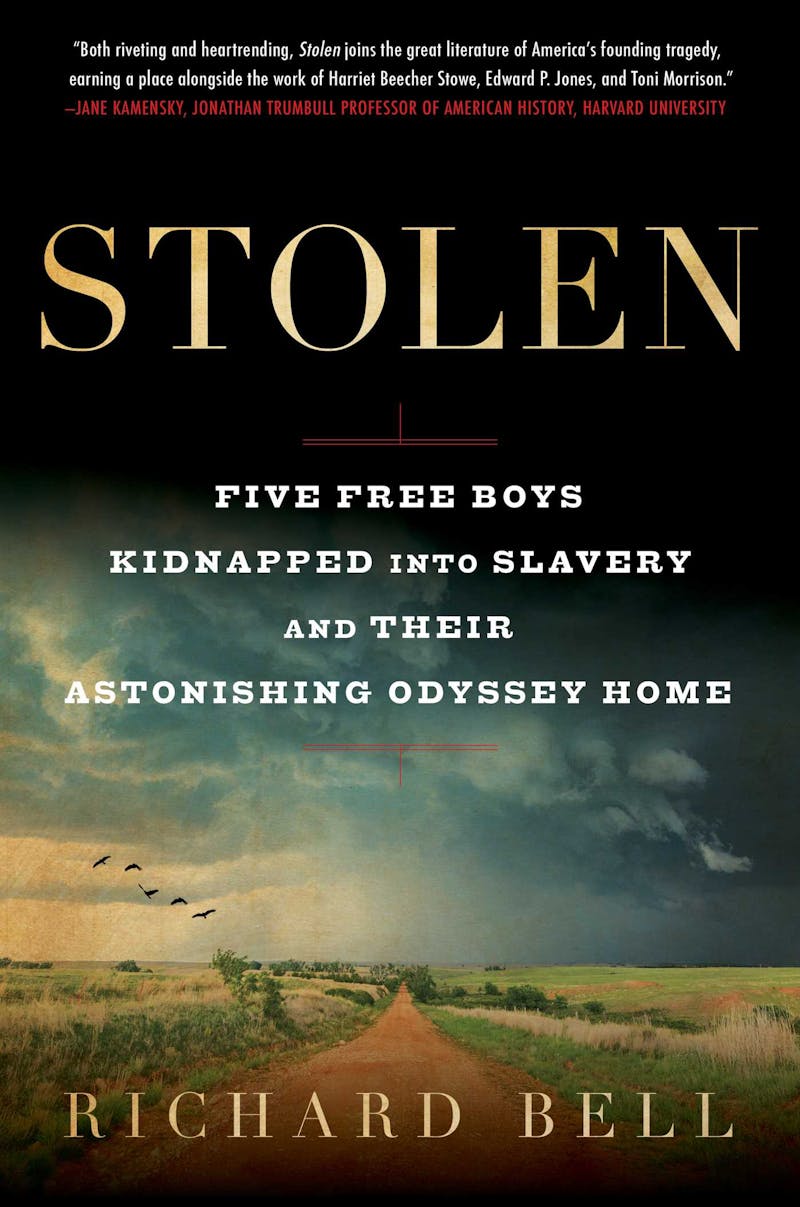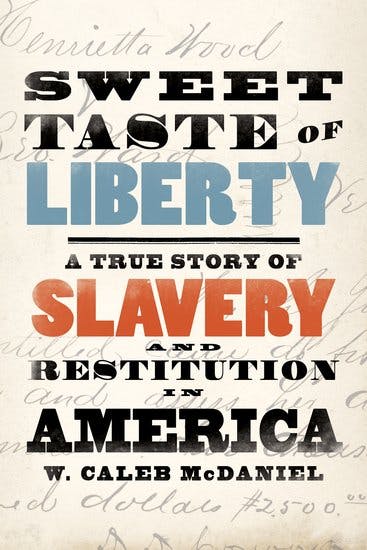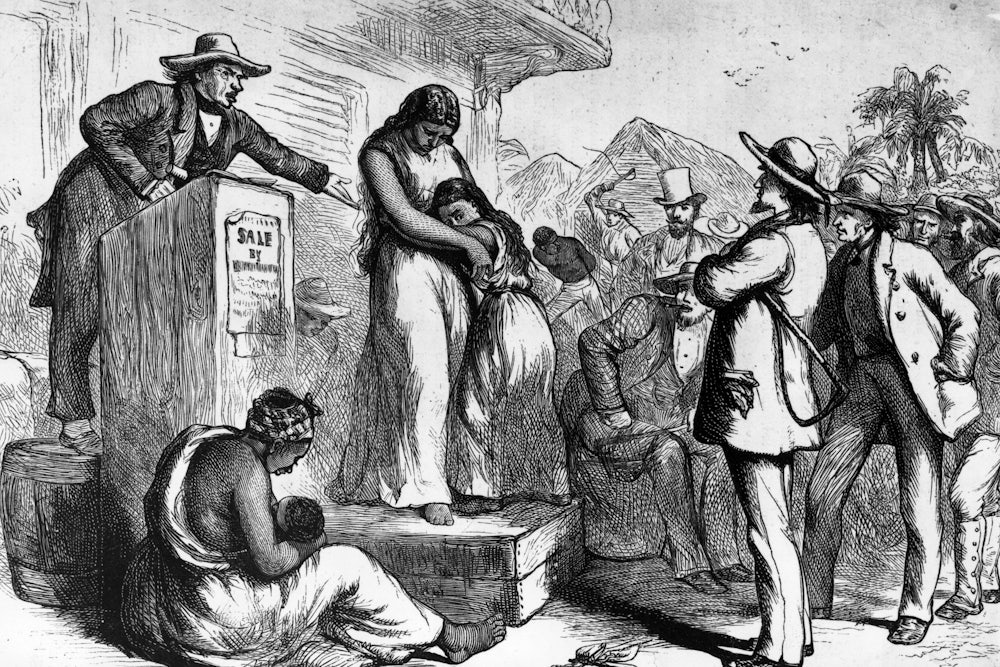When we think about slavery, we tend to imagine freedom as its natural opposite. But this makes it difficult to comprehend the actual conditions under which un-enslaved African Americans actually lived before and even long after the Civil War. For the 12 percent of African Americans who were not enslaved in 1860—nearly half a million people—the closest parallel we have today might be the refugee or undocumented worker—stateless, citizens of no nation, “a problem” widely seen as needing a fix. This was not a case of simple neglect. White people in the North and South actively denied black people their rights. Throughout the North, the un-enslaved were restricted from voting, serving on juries, and attending white schools just as northern emancipation laws were coming into effect. When Supreme Court Justice Roger B. Taney ruled in the Dred Scott decision in 1857 that black people “had no rights which the white man was bound to respect”—effectively denying black people citizenship—he was cementing into law what had long been occurring in practice.


But arguably the most pervasive—and least appreciated—fact of un-enslaved black life was the constant fear of being re-enslaved. Even for those with freedom papers, one had to always be vigilant. You never quite knew if that genial white man or woman, or their occasional black accomplice, was honestly offering you a job you desperately needed, or if they were setting you up for a trap. In August 1825, Sam Scomp, a 15-year-old runaway slave, learned the hard way. He was in Philadelphia for only a week, having just escaped from his New Jersey plantation, when a black man approached him with a job. If Scomp helped him haul fruit to the city’s dockyards, he could make enough money to buy a meal. When the two made it to the small vessel that had arranged to buy the fruit, three white men offered Scomp a drink below deck. Tired and thirsty, Scomp accepted. But almost as soon as he walked on board, the men stuffed a rag into his month, tied his hands behind his back, and threw him beneath the hull. There, he found two other black boys—Enos Tilghman, ten, born un-enslaved, and Alex Manlove, eight, also born un-enslaved. Over the next few weeks, the kidnappers picked up two more black boys and two black women, and sold them all into slavery.
The stories of these black boys, and several black women, are at the center of two extraordinary new books. Stolen, by Richard Bell, a historian at the University of Maryland, tells the story of Sam Scomp and the four other un-enslaved black boys with whom he was illegally sold into slavery, while Sweet Taste of Liberty, by W. Caleb McDaniel, a historian at Rice, focuses on the remarkable life of Henrietta Wood. Like the five boys of Bell’s account, Wood was kidnapped and illegally sold into slavery. And like them, she would spend years seeking justice, in her case suing for and winning a considerable sum from her illegal enslaver, a payment McDaniel likens to a form of reparations.
None
of the people in these books is well-known, even to historians. They left
almost none of their own papers; most of them could not write. Yet through
painstaking archival research, Bell and McDaniel have reconstructed their lives
with such vivid detail, sensitivity, and riveting storytelling that you would
think each of their figures left us whole autobiographies. For the simple act
of recovering their stories, both books would be commendable. But what makes
them essential reading is the larger questions they demand of us as readers: What
exactly was the condition under which un-enslaved black people lived before
emancipation—and what is it that they and their descendants are owed?
The story of Scomp and the four other boys kidnapped in 1825 Philadelphia was far from unique. Bell uses their story to illustrate a ubiquitous and illicit trade in un-enslaved black northerners that persisted until the Civil War. Though exact numbers are impossible to know, Bell posits that the practice was widespread enough to mirror the Underground Railroad in number, duration, and sophistication. Indeed, he calls this illicit trade the Reverse Underground Railroad. Similar to the Underground Railroad’s conductors and agents, it had shadowy rings of kidnappers who forged papers, wore disguises, and worked in defiance of the law. And like the Underground Railroad, the reverse one transported “tens of thousands of free black people”—but to slavery, not freedom.
Uncovering the Reverse Underground Railroad matters, Bell argues, not only because it underscores the “achingly fragile” nature of black freedom. It also highlights the essential role that northern black communities played in undermining slavery. The black parents of the kidnapped pushed their community leaders to form armed self-defense organizations to defend against kidnappers. Black leaders called on white antislavery societies, who before the 1830s barred black people and women from joining, to defend the illegally kidnapped in court. Black communities, working with their white allies, publicized stories of kidnaps as often as they could (you may have heard of Solomon Northup) which helped convince white northerners, if not to embrace emancipation, then at least to see the cruelty of slaveholders.
Not least, black communities and their white allies pressed lawmakers to pass anti-kidnapping laws, which, in turn, provoked a ferocious southern backlash. By 1850, southerners got Congress to enact a new Fugitive Slave Law, which not only severely penalized anyone for aiding fugitive slaves, but also “put the country on a collision course with civil war.”
None of this might have happened had boys like Sam Scomp not spoken out. Over four months, two of the kidnapping ring’s leaders—Ebenezer Johnson and his wife, Sally—marched Scomp and six other abductees hundreds of miles to the Deep South. By the time a Mississippi planter bought Scomp, Ebenezer had already beaten to death one of the boys, Joe Johnson; he was 14. Despite the potential consequences, Scomp decided to tell his new owner everything that had happened. The owner, John Hamilton, quickly filed a lawsuit against the kidnappers, and by 1826 the case of had become “the first kidnapping in American history to be so obsessively reported on and discussed,” Bell writes.
The record left from that reporting is in part what has enabled Bell to tell the story in such rich detail. While the boys shared common vulnerabilities—like most of the kidnapped, they were young, often far from their families, and living on the streets or in orphanages—Bell emphasizes their individuality. Scomp was the bold one, the only one born into slavery and to have escaped. Cornelius Sinclair, 10, was the studious one, the one whose parents were able to get him into one of the few charitable schools that black children in Philadelphia could attend. Alex Manlove, eight, briefly attended the same school. But he had a difficult relationship with his stepfather, who put him in foster-care. When he was apprenticed to an abusive white mat-maker, he ran away—only to be kidnapped.
Joe Johnson was the rebellious one. Like Enos Tilghman, he worked for one of Philadelphia’s many black chimney sweep masters. Where the archives run thin, Bell responsibly imagines what these two boys’ interior lives might have been like, and how they might have been kidnapped. Perhaps, like many young black chimney sweepers, Enos and Joe spent “hours fantasizing about the fun they would have had when the workday was done.” Perhaps they planned on going down to the docks of the Delaware River after work, where many black children went to let off steam. Or perhaps they were impoverished, hungry, and hard-working enough that they “jump[ed] at a stranger’s invitation to earn twenty-five cents” carrying some fruit to a small vessel nearby.
That the man who offered these boys some work was black might seem surprising. But the most compelling aspect of Stolen is how Bell handles these seeming oddities. Black accomplices like John Purnell, the initial kidnapper, were not uncommon. Like most un-enslaved black people, they had few employment options, and the pay offered by kidnapping ringleaders—who were almost always white—could be immensely appealing. Purnell once bragged that he could make “from fifty to an hundred dollars in a week” kidnapping black people, which would have been between five and ten times the amount he might have earned chopping wood or pushing a handcart. White kidnapping ringleaders often preyed on vulnerable black men because they could blend into black neighborhoods and lure their victims without raising the mistrust that a nice-seeming white man might. Black parents had been having “the talk” with their kids long before modern-day police brutality: In the era of slavery, un-enslaved black parents “regularly pleaded with their children to be on the lookout for white ‘Georgia-men’,” Bell writes, referring to white kidnappers. If some parents forgot to tell their children to be wary of nice-seeming black men too, it was understandable.
Bell is equally convincing when explaining other apparent anomalies. Why would a white plantation owner, John Hamilton, sue the kidnappers from whom he unwittingly bought Scomp? Bell shows that, in fact, southern slaveholders frequently sued illegal slave traders. It had nothing to do with their opposition to slavery, and everything to do with their desire to protect the image of slavery. By aggressively prosecuting the illegal slave trade—and publicizing their role fighting on behalf of illegally enslaved black people—they could show white northerners that slavery was not the lawless, flesh-consuming racket that abolitionists said it was. In addition, they might encourage civic leaders in free northern cities just across the border to return fugitives.
But black communities had a way of unsettling the plans of city elders. Northern black community leaders and abolitionists would insist that illegally kidnapping un-enslaved black people was no different than legal slavery. As the abolitionist George Bourne wrote in 1834: “He who claims a coloured child as his property, and nurtures and detains it in slavery, is equally a man-thief with the negro-stealer.” By the 1850s, the term “man-stealing,” which initially referred only to kidnapping, became a common slur for all slaveholders. Bell credits activism against kidnapping for helping to push the nation into a war over slavery. But he also underscores that there was no justice for the five kidnapped boys. The four who survived may have been freed, but only two of their kidnappers had been captured and imprisoned. The convicted were also the lowest on the totem pole: a white boat crewmember, and John Purnell, the black accomplice. The ring-leaders—Ebenezer and Sally, and their larger family, which for decades ran one of the nation’s largest kidnapping cartels—were never caught.
The question of justice—what’s owed not only to those illegally kidnapped, but to all the enslaved, and to all black people today burdened by the legacy of slavery—is at the center of McDaniel’s Sweet Taste of Liberty. In the story of Henrietta Wood—who was kidnapped in Cincinnati in 1853, after being legally un-enslaved for five years—McDaniel sees an overlooked and early example of reparations. Like Scomp, Wood took the extraordinary risk of telling her story to a white inn-keeper she had met while being taken to her new owner in Mississippi. The man relayed her message to sympathetic white lawyers in Kentucky, a slave state, who filed a suit on her behalf. Though the case took nearly 25 years to conclude, Wood succeeded in extracting $2,500 from her original kidnapper. It was a fraction of the $20,000 she had sued for, but it was enough to help her son, Arthur Simms, attend law school and buy a home in Chicago—enough, that is, to the improve his life chances. Perhaps it was not that elusive thing we call justice, but it was, McDaniel suggests, something tangible and consequential.
Wood was another victim of what Bell calls the Reverse Underground Railroad. As in Stolen, McDaniel expertly recovers her obscure life from diffuse archival fragments. Born into slavery in Kentucky, around 1818, Wood received her freedom papers in 1848. That year, her owner, a white woman named Jane Cirode, took her across the Ohio River into Cincinnati and freed her. You might think she did so out of moral opposition to slavery, but McDaniel is particularly good at challenging assumptions. Cirode legally freed Wood not because she opposed slavery—in fact, she rented Wood out to other enslavers for years before freeing her. Rather, she freed her because she had gotten wind that her husband’s creditors might seize Wood. By legally freeing Wood, Cirode could still pressure Wood into working for her as a domestic laborer. After all, what other options did she have? “Probably nine out of ten” un-enslaved black women in Cincinnati worked as a domestic laborers, McDaniel writes, virtually their only means of employment. Cirode provided Wood with room and board, but, as Wood later recalled, Cirode only “gave me a little money from time to time.” This was freedom.
Wood eventually found work with another white woman. But not long after she changed employers, she was kidnapped by a white man named Zebulon Ward and sold to Gerard Brandon, a Mississippi cotton planter. One of the largest slaveowners in the nation—he owned nearly 700 enslaved people—Brandon kept her enslaved until the very end of the Civil War. During her re-enslavement, she also became pregnant with Arthur Simms, who was likely conceived through rape. McDaniel spends considerable space exploring Ward’s life, and not only because Wood successfully sued him. His story is also meant to resonate with mass incarceration today: Ward’s full-time career was not as a kidnapper, but as the head of several state prison systems, first in Kentucky, and after the Civil War, in Arkansas. Ward could afford to fight Wood’s lawsuits for decades in part because he was amassing a fortune renting out black prisoners. Postwar southern laws were designed to target and imprison black people, often for petty or invented offenses, and by the 1870s, for the first time in our nation’s history, many prisons became overwhelmingly black. In turn, Ward and others like him pioneered the convict-leasing system, which allowed them to rent out black prisoners and keep the profit for themselves—“slavery by another name,” as it is often called.
By the time Ward was ordered to pay $2,500 to Wood in 1878, he could laugh it off as a pittance. Even Wood demanded a new trial. But by tracing the impact those $2,500 had on her son’s life, McDaniel wants us to think hard about the real benefits that financial reparations might have. He knows full well that financial payouts to the descendants of slaves is only one meaning of reparations. He also knows that there are reasonable arguments against it: For instance, might financial pay-outs—and potentially meager ones—give white Americans an excuse not to address the tangled knot of racist policies, laws, behaviors, and attitudes that we call systemic racism? Even if the overwhelming majority of black Americans today could, because their ancestors were enslaved, make a claim for remuneration, would that be justice for the significant minority of black people who are not the descendants of slaves, but who are forced to live in a racist society, one that slavery created? And would any kind of reparations, financial or otherwise, be justice at all?
McDaniel acknowledges the dangers of a “a cheap payoff.” But he wants us to consider the weakness of the counter-argument, the one that would have us accept “apologies without paychecks,” as he recently wrote in the New York Times. In any case, by acknowledging the inability of reparations to achieve justice, we might actually strengthen, rather than weaken, the case for them. As the scholars Saidiya Hartman and Stephen Best have written: “If what has been done cannot be undone, then the forms of legal and social compensation available are less a matter of wiping the slate clean than of embracing the limited scope of the possible in the face of the irreparable.” The limited scope of the possible in the face of the irreparable—that is what reparations ought to be after.
Slavery was a 400-year human atrocity for which there is no material remedy. It destroyed the lives of untold millions. It forged our nation, indeed many nations, and it forged not only black people, but white people, too. Because slavery made race—an indelible feature of our nation—it is something that we can never put behind us, nor something that we might ever want to put behind us. Like any historical fact, it must be lived with and accepted. Its most pernicious legacy—racism—most certainly can be overcome, or at least contained and diminished, but what created it will always remain. We should therefore avoid thinking of reparations as an attempt at “wiping the slate clean.” We might then see them as meaningful and consequential, and in the way that they were for Henrietta Wood’s son Arthur, and all of his descendants.
